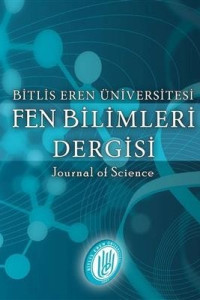Assessing the Effects of Water Content on the Unconfined Compression Strength of Egg White-Stabilized Khorasan Mortar
Abstract
Khorasan mortar, a traditional, durable, and environmentally friendly building material, has been utilized for centuries in the Khorasan region of Türkiye. Its composition, which is based on natural hydraulic lime, imparts exceptional strength, breathability, and workability, making it suitable for diverse construction projects. Consequently, investigating the mechanical properties of Khorasan mortar, specifically its interaction with stone elements in historical buildings, in various mixing ratios, can provide valuable insights into the preservation and future of these architectural treasures. This study focuses on researching Khorasan mortar as a material of interest, utilizing brick ballast, lime, standard sand, water, and egg white, with a particular emphasis on egg white-stabilized Khorasan mortar. Four different water contents (70%, 80%, 90%, and 100%) were carefully selected, based on the dry mass of the egg white, to prepare a total of 12 samples (three identical samples for each water content) for testing. Prior to testing, the samples were cured for seven days in a desiccator. Unconfined compression strength tests were conducted, and axial strain-stress graphs were plotted to determine the unconfined compression strength (UCS) of the mixtures. The results revealed that the mixtures containing 80% water content exhibited the highest UCS values, while the samples with 90% and 100% water content demonstrated similar UCS values. The minimum UCS was approximately 0.518 times the maximum value, suggesting the importance of optimizing the water amount in Khorasan mortar formulations.
References
- [1] M. S. Akman, A. Güner, and İ. H. Aksoy, "The history and properties of khorasan mortar and concrete," II. Uluslararası Türk-İslam Bilim ve Teknoloji Tarihi Kongresi, İstanbul, Türkiye, April 28- May 2, 1986, pp. 1-11.
- [2] İ. Kılıç, "Horasan harcında yumurta akı kullanımının incelenmesi" Kırklareli Üniversitesi Journal of Engineering and Science, vol. 7-1, pp. 122-134, June 2021.
- [3] T. İsafça-Kaya, K. Karakuzu, S. Özen, A. Mardani, and A. Doğangün, "Effects of shrinkage reducing admixture and polypropylene fiber utilization on some fresh state, mechanical and durability properties of khrosan mortar" International Journal of Architectural Heritage, July 2022, https://doi.org/10.1080/15583058.2022.2100295..
- [4] H. S. Şengel, M. Canbaz, and E. Güler, "Utilization of ceramic waste in the production of Khorasan mortar" Challenge Journal of Structural Mechanics, vol. 5, no. 3, pp. 80-84, 2019, https://doi.org/10.20528/cjsmec.2019.03.001.
- [5] N. Arıoğlu, and S. Acun, "A research about a method for restoration of traditional lime mortars and plasters: A staging system approach" Building and Environment, vol. 41, no. 9, pp. 1223-1230, September 2006, https://doi.org/10.1016/j.buildenv.2005.05.015.
- [6] H. Böke, S. Akkurt, and B. İpekoğlu, "Tarihi yapılarda kullanılan horasan harcı ve sıvalarının özellikleri [The properties of Khorasan mortar and plasters used in historical buildings]" Yapı Dergisi, 2004.
- [7] B. Işıkdağ, and İ. B. Topçu, "Improvement of Khorasan mortar with fly ash for restoration of historical buildings" Science and Engineering of Composite Materials, vol. 21, no. 3, pp. 359-367, 2014, https://doi.org/10.1515/secm-2013-0065.
- [8] A. Bilal, "Investigation of hydraulic binding characteristics of lime based mortars used in historical masonry structures" IOP Conf. Series: Materials Science and Engineering, vol. 245, 022081, 2017, https://doi.org/10.1088/1757-899X/245/2/022081
- [9] C. B. Emrullahoğlu Abi, and E. Abi, "Bentonite doped Khorasan mortar" Academic Journal of Science, vol. 08, no. 02, pp. 43-54, 2018.
- [10] ASTM D2166/D2166M-16. Standard test method for unconfined compressive strength of cohesive soil, 2016. pp. 1-7.
- [11] M. Canbaz and E. Güler, "The Effect of Lime Type on the Properties of Khorasan Mortar" 6th Symposium on Conservation and Strengthening of Historical Buildings, Trabzon, 2017.
Abstract
References
- [1] M. S. Akman, A. Güner, and İ. H. Aksoy, "The history and properties of khorasan mortar and concrete," II. Uluslararası Türk-İslam Bilim ve Teknoloji Tarihi Kongresi, İstanbul, Türkiye, April 28- May 2, 1986, pp. 1-11.
- [2] İ. Kılıç, "Horasan harcında yumurta akı kullanımının incelenmesi" Kırklareli Üniversitesi Journal of Engineering and Science, vol. 7-1, pp. 122-134, June 2021.
- [3] T. İsafça-Kaya, K. Karakuzu, S. Özen, A. Mardani, and A. Doğangün, "Effects of shrinkage reducing admixture and polypropylene fiber utilization on some fresh state, mechanical and durability properties of khrosan mortar" International Journal of Architectural Heritage, July 2022, https://doi.org/10.1080/15583058.2022.2100295..
- [4] H. S. Şengel, M. Canbaz, and E. Güler, "Utilization of ceramic waste in the production of Khorasan mortar" Challenge Journal of Structural Mechanics, vol. 5, no. 3, pp. 80-84, 2019, https://doi.org/10.20528/cjsmec.2019.03.001.
- [5] N. Arıoğlu, and S. Acun, "A research about a method for restoration of traditional lime mortars and plasters: A staging system approach" Building and Environment, vol. 41, no. 9, pp. 1223-1230, September 2006, https://doi.org/10.1016/j.buildenv.2005.05.015.
- [6] H. Böke, S. Akkurt, and B. İpekoğlu, "Tarihi yapılarda kullanılan horasan harcı ve sıvalarının özellikleri [The properties of Khorasan mortar and plasters used in historical buildings]" Yapı Dergisi, 2004.
- [7] B. Işıkdağ, and İ. B. Topçu, "Improvement of Khorasan mortar with fly ash for restoration of historical buildings" Science and Engineering of Composite Materials, vol. 21, no. 3, pp. 359-367, 2014, https://doi.org/10.1515/secm-2013-0065.
- [8] A. Bilal, "Investigation of hydraulic binding characteristics of lime based mortars used in historical masonry structures" IOP Conf. Series: Materials Science and Engineering, vol. 245, 022081, 2017, https://doi.org/10.1088/1757-899X/245/2/022081
- [9] C. B. Emrullahoğlu Abi, and E. Abi, "Bentonite doped Khorasan mortar" Academic Journal of Science, vol. 08, no. 02, pp. 43-54, 2018.
- [10] ASTM D2166/D2166M-16. Standard test method for unconfined compressive strength of cohesive soil, 2016. pp. 1-7.
- [11] M. Canbaz and E. Güler, "The Effect of Lime Type on the Properties of Khorasan Mortar" 6th Symposium on Conservation and Strengthening of Historical Buildings, Trabzon, 2017.
Details
| Primary Language | English |
|---|---|
| Subjects | Civil Geotechnical Engineering, Soil Mechanics in Civil Engineering, Construction Materials |
| Journal Section | Araştırma Makalesi |
| Authors | |
| Early Pub Date | December 25, 2023 |
| Publication Date | December 28, 2023 |
| Submission Date | July 17, 2023 |
| Acceptance Date | September 23, 2023 |
| Published in Issue | Year 2023 Volume: 12 Issue: 4 |


